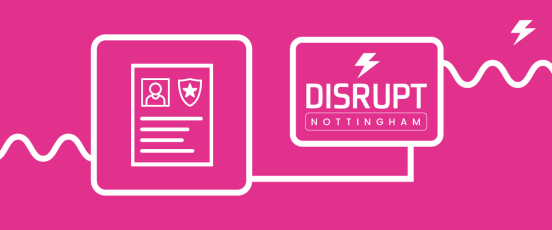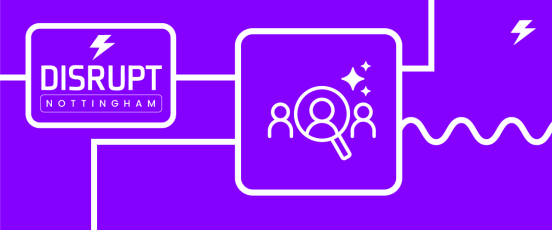What is Employee Experience, and How Can You Improve It?

In the bustling world of HR and management, one term that's been on everyone’s lips lately is "employee experience." But what exactly is it, and why does it matter? Let’s explore why employee experience is fundamental to any successful business, and how you can master it in yours.
The Significance of Employee Experience
Why employee experience matters
Picture this: You walk into a workplace where everyone greets you with warm smiles, the atmosphere is buzzing with positivity, and you feel valued and appreciated for your contributions. Now, contrast that with a scenario where you step into an office and the tension is palpable, no one seems to communicate with each other, and you feel like just another cog in the machine. Which one sounds like a place where you'd thrive? It’s probably the first.
Employee experience is all about the journey an employee takes throughout their time with your company. It encompasses the entire working environment as well as every interaction with you as an employer, from the first interview to the exit interview.
It matters because it influences how employees feel about their work, their colleagues, and the whole organisation. Because happy employees aren’t just a nice-to-have; they're the backbone of a flourishing business.
Think about it: when employees feel engaged, motivated, and supported, they're more likely to go the extra mile and stick around for years to come. On the other hand, disengaged employees can lead to lower productivity, higher turnover rates, and ultimately, a negative impact on the bottom line.
The impact of employee experience on business outcomes
As we’ve just seen, there’s a strong link between employee experience and business performance. Firstly, there’s the impact on productivity. Satisfied employees will probably be more innovative, deliver top-notch work, and complete it more efficiently than their less happy counterparts.
Then there’s talent attraction and retention. Right now, talented professionals have their pick of employers, and they're more selective than ever. For many of the best employees, a good salary is no longer enough. They want a positive experience that aligns with their values, and prioritising this will help you entice skilled candidates and keep them on board long term.
That’s not to mention that word of mouth can make or break your recruitment efforts. Employees are likely to tell others about their experience, whether in person or on popular job sites, influencing prospective employees’ perceptions of working for your company.
On top of this, employee experience can have ripple effects throughout the organisation. A positive shared experience fosters collaboration, creativity, and continuous improvement, making your business more competitive and resilient. Negative experiences do the opposite, leading to a fragile culture and operations that run on minimum effort.
Stages of the Employee Experience
Employee experience is broken down into six distinct stages. Let’s take a look at each one.
1. Attract: It all begins with the recruitment process. This is your chance to make a stellar first impression and showcase what makes your company a great place to work. From building a strong reputation in the job market to conducting interviews, every interaction affects your overall success.
2. Onboard: Once you've found the perfect fit, it's time for onboarding. This is more than just filling out paperwork - it's about helping new hires feel welcome, informed, and equipped to succeed in their roles. A well-designed onboarding process can make all the difference in ensuring employees meet expectations and feel like part of the team.
3. Engage: This is where the bulk of the employee experience takes place, encompassing every aspect of work life from day-to-day tasks to building relationships with colleagues. Things like clear communication, meaningful work, and a supportive manager all contribute to a positive experience. When employees feel valued, challenged, and respected, they're more likely to be engaged.
4. Develop: Nobody wants to feel like they're stuck in a dead-end job. Employees need to know there are opportunities for growth within your organisation, and that their hard work will be rewarded, whether it’s through training programmes, mentorship, or clear paths for progression. Investing in professional development also helps you build a robust talent pipeline for future roles.
5. Perform: Recognition and constructive feedback improve employee experience as well as job performance, and this should go beyond annual performance reviews. Supporting your people to perform well could mean anything from a simple thank you for a job well done to noticing when someone’s struggling and offering the resources they need.
6. Exit: Whether an employee is leaving for another opportunity or retiring after years of service, how you handle their departure can leave a lasting impression. A thoughtful exit process shows you value employees even as they're moving on, influencing how they talk about your company in the future. It also boosts morale among remaining team members.
Employee Experience Versus Employee Engagement
Differences and Similarities Between Employee Experience and Engagement
Employee experience and employee engagement are often used interchangeably, but they're not quite the same thing. Let's untangle these two critical aspects of people management.
Employee experience: Experience covers every touchpoint an employee has with your organisation, from recruitment to resignation and everything in between. It's about the overall journey and how employees feel about their work environment, the culture, their relationships with colleagues, and the support they receive from managers.
Employee engagement: Engagement refers to the emotional commitment an employee has to their organisation and its goals. Engaged employees are passionate about their work, feel a sense of connection to their company's mission, and go above and beyond to contribute to its success.
How they’re related: A positive employee experience often leads to higher levels of engagement, as satisfied employees are more likely to be emotionally invested in their work and their organisation. Engaged employees also contribute to a positive employee experience by creating a more enthusiastic and inspiring atmosphere.
The Shifting Focus From Engagement to Experience
In recent years, focus has switched from employee engagement to employee experience, and for good reason. While engagement is important, it's just one piece of the puzzle – the end result of positive employee experience. Companies now realise that to attract, retain, and motivate top talent, they need to create an environment where employees can thrive at every stage of their journey.
Here are some of the reasons behind this shift.
Workforce demographics: Younger generations are reshaping traditional notions of employment, prioritising factors like work-life balance and ethical values over conventional financial benefits. This makes engaging employees far more complex and less one-dimensional.
Technology: While remote work initially threatened cultural cohesion, cutting edge HR software and an influx of online collaboration platforms have come to the rescue. The latest tools make it easier than ever to create a seamless and engaging employee experience while maintaining multiple touchpoints with employees who don’t work on site.
Enhancing The Employee Experience
Strategies To Improve Employee Experience
Now that we understand the importance of employee experience, let's explore some practical strategies for enhancing it within your organisation.
1. Create a positive work environment: Help employees feel valued and supported by encouraging collaboration and open communication, recognising achievements, and providing opportunities for social connection among team members.
2. Prioritise work-life balance: Encourage employees to take breaks, unplug after work hours, and offer flexible working arrangements to accommodate people's individual needs and responsibilities outside of work. You could even support emotional and physical wellbeing with things like mental health services and subsidised gym memberships.
3. Invest in development: Provide plenty of opportunities for training, mentorship, and career advancement to help everyone reach their full potential.
4. Improve efficiency: Remove barriers to productivity by automating repetitive tasks, streamlining processes, and giving employees the right tools to do their jobs. Getting rid of frustrating tasks empowers employees to focus on what they do best.
5. Solicit and act on feedback: Regularly ask employees about their experiences, challenges, and suggestions for improvement. You could use surveys, focus groups, or one-on-one conversations to gather insights into what's working well and what’s not. Then, take action by addressing concerns and making changes swiftly.
How Leaders Can Enhance Employee Experience
Leadership plays a crucial role in shaping the employee experience and setting the tone for the whole organisation. Here are some ways leaders can enhance employee experience.
1. Lead by example: Embody the values and behaviours you want to see in employees. For example, demonstrate openness and integrity in all interactions, and model a healthy work-life balance to show employees it’s ok to do the same.
2. Communicate effectively: Communicating well builds trust, supports collaboration, and ensures everyone is on the same page. Be transparent about changes and encourage open dialogue at all levels of the organisation.
3. Empower employees: As a leader, you don’t always know best, and employees’ unique talents and perspectives can lead to valuable changes. So give team members the autonomy to make important decisions about their work, and offer the resources and encouragement they need to innovate.
Measuring Employee Experience
Tools and Techniques for Assessing Employee Experience
You can't improve what you don't measure. To gauge the effectiveness of your efforts and identify areas for improvement, you need the right tools and techniques for assessing employee experience. Here are some successful methods.
1. Surveys
Surveys are a classic tool for collecting feedback from employees about their experiences, perceptions, and satisfaction levels. Whether it's an annual engagement survey, regular pulse surveys, or targeted surveys focused on specific aspects of the employee experience, surveys provide valuable insights into how employees are feeling and what matters most to them. What’s more, you can use your survey communications to show how much you value employees’ input and explain what you plan to do with the results.
2. Interviews and focus groups
Interviews and focus groups offer a more in-depth exploration of employees' experiences and perspectives. Conduct one-on-one interviews or group discussions to delve into specific issues or gather feedback on broader topics. These qualitative methods can provide context and nuance to complement the quantitative data you collect through surveys.
3. Regular check-ins
Check-ins (or one-to-ones) aren’t just for reviewing to-do lists. They’re also the perfect opportunity to gather informal feedback and gauge employees’ reactions to what’s happening around them. On top of this, they boost engagement by showing employees you’re willing to invest time in them and listen to what they have to say. Our People First HR system offers a range of tools to help you get the most out of check-ins.
4. Performance Metrics
Performance metrics such as turnover rate, absenteeism, and productivity levels also provide valuable indicators of employee experience. Employees jumping ship or spending lots of time off sick may signal underlying issues like burnout or even workplace bullying, while a drop in productivity could indicate a lack of motivation.
5. Social media and online reviews
You may fear social media and websites like Glassdoor if that’s where employees go to complain when they’re not happy. But they’re also a goldmine of candid employee feedback. With employees able to review and rate employers anonymously, you’ll get the most honest, and therefore the most valuable, information from these sources.
Interpreting and Acting On Employee Experience Data
Collecting data is just the first step - what you do with it is what really matters. Here are some tips for using the data you’ve gathered effectively:
1. Analyse trends and patterns
Examine the data you’ve collected to identify common themes and recurring issues that may be impacting the employee experience. Make sure you attribute feedback to the correct employee experience stages so that you can segment the data in a meaningful way. This is where the right analytics and reporting software becomes indispensable.
2. Seek input and collaboration
Don't make assumptions about what employees want or need; instead, involve them in the process. Ask employees at all levels of the organisation to help you come up with solutions that address their concerns and aspirations. By involving them in the decision-making process, you not only gain valuable insights, but you also create a sense of ownership and buy-in for the changes ahead. At the other extreme, failing to act on employees’ feedback quickly will lead to them taking future opinion-gathering exercises less seriously.
3. Develop action plans
Based on the insights you’ve gleaned, develop action plans with clear goals, timelines, and responsibilities. Prioritise areas for improvement based on their potential impact and feasibility, and allocate the resources needed to ensure initiatives succeed. Don’t forget to be transparent about your plans and offer employees regular progress updates.
4. Monitor and adapt
Once you've implemented changes, continue to measure employee experience to check that they’re effective. Employee experience is an ongoing journey, not a one-off project, so stay flexible and responsive. Be open to further feedback and be willing to adapt your approach based on new information or changing circumstances.
It’s clear that investing in a positive employee experience isn't just about being nice - it's a strategic move that directly enhances business performance. To create a workplace where everyone thrives, you need the tools and expertise to manage employee touchpoints, measure engagement, and deliver initiatives that improve the employee experience. Find out more in our guide to creating a robust employee experience strategy.



